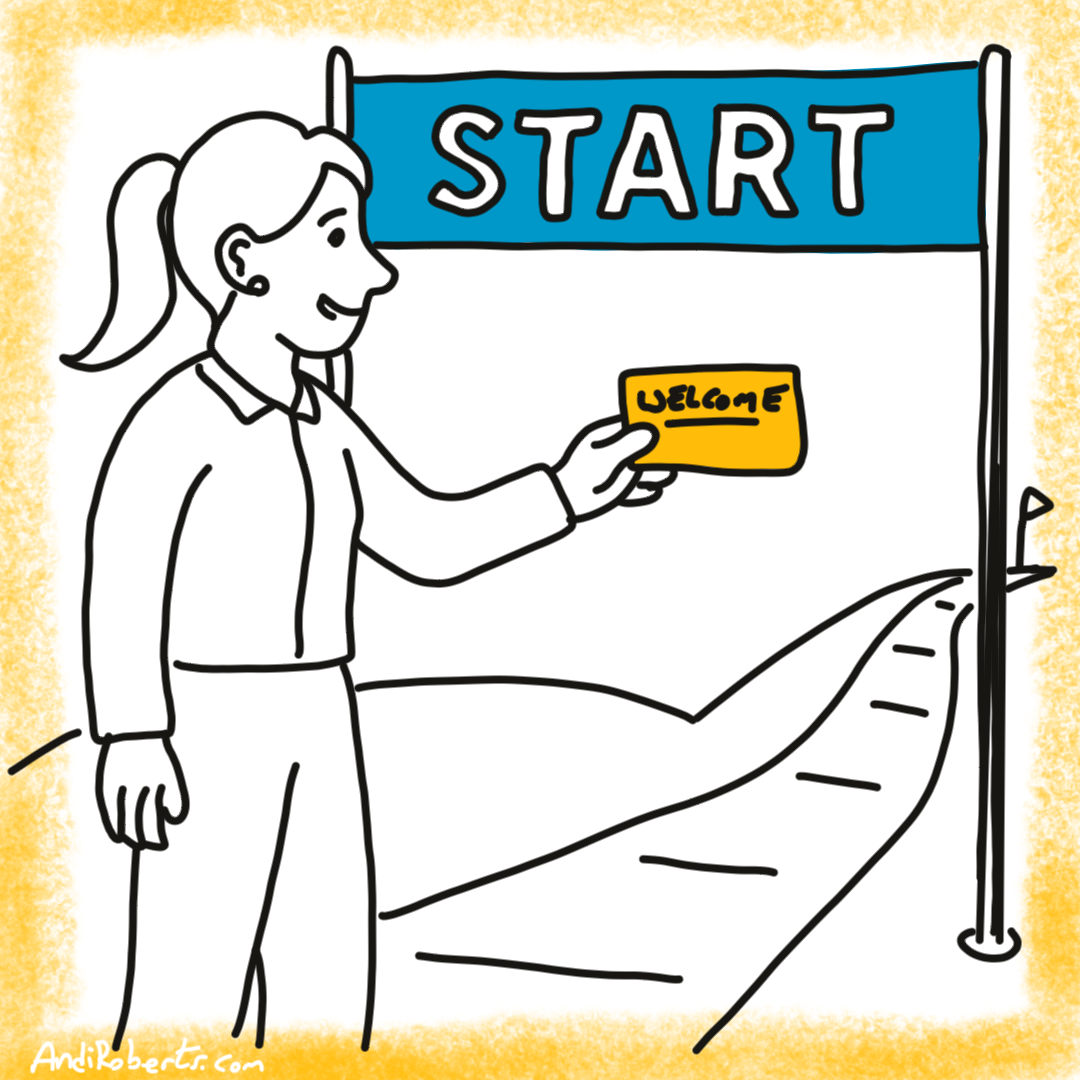In many organisations tears are treated as disruption. Someone cries in a meeting and you can feel the air change. Eyes drop. People shift awkwardly. Leaders rush to close the emotion and get the group back to discussion or decision. Yet the behavioural science evidence is clear. Tears are not the problem. Tears are the signal. They are a visible indicator that a person’s emotional load in that moment has exceeded their internal capacity to regulate it privately. When leaders rush to minimise or shut down tears, they remove precisely the diagnostic information that could help them understand what is actually overwhelming.
Crying is rarely about a single moment. It is usually the final outward expression of a long inward accumulation. People cry when the holding becomes too much. Tears are the moment where the capacity buffer collapses. That means that crying at work is never just “someone being emotional”. It is a data point about the relationship between the human and the system that surrounds them.
What the research tells us
Crying at work is not rare. A major workplace culture study found that 52 percent of employees had cried at work in the previous twelve months (Qualtrics and HBR Analytic Services, 2021). This is not a fringe behaviour. This is mainstream.
Emotion regulation research shows that crying is not immaturity or unprofessionalism. It is one of the body’s recovery strategies when cognitive load and emotional load exceed internal capacity (Vingerhoets and Bylsma, 2016). Crying is a regulation act, not merely an emotional leak.
However social interpretation shapes consequence. Controlled experiments show that observers often perceive people who cry as more sincere but may also judge them as less competent if context is not understood (Rychlowska et al., 2020). Which means the leader’s response matters. Your behaviour shapes the social meaning of the moment.
Finally system research is clear. Work related emotional distress most often originates not in personality but in conditions created by work design such as unclear expectations, workload intensity, low control, and inconsistent guidance (Leka and Cox, 2018). Tears often reflect structural strain.
Is crying always about work?
Not necessarily. Tears in the workplace can come from outside life events. Personal stress, grief, rupture and strain can spill over.
Yet even when the origin is external, work is often the place where tears appear because that is where capacity finally runs out. Emotion regulation studies show that tears emerge when people no longer have the bandwidth to hold the emotional load internally (Schäfer et al., 2022). If the work environment removes recovery, space or relational support, it becomes the location of the emotional overflow.
So leaders must not assume tears are always caused by work. And leaders must not assume they are not. The most constructive stance is to treat tears as a possible capacity signal and explore gently. One respectful line is: “Is this mainly about what is happening here, or is something outside work being made harder because of how the work is currently structured”. Crying in the workplace is not always directly caused by workplace conditions. But crying in the workplace is always about capacity. And capacity is always influenced by context.
Five leadership steps that work
Step one: Shift your mindset
The first shift is conceptual. Tears are not misbehaviour. Tears are data. Emotional regulation science shows that crying emerges when the person’s internal capacity to regulate stress is exceeded (Schäfer et al., 2022). When leaders label crying as weakness, they increase shame. Shame narrows cognitive bandwidth and prevents reflection. When leaders instead interpret tears as a signal of contextual misalignment, meaning making becomes possible. The leader’s role is not to fix the tear. It is to understand what the tear is pointing to. This reframing also protects the leader from urgency. If you believe your job is to “stop” the crying, you become anxious. If you believe the crying is information, you become curious. Curiosity is the correct posture.
Step two: Respond calmly in the moment
When tears appear, the leader’s nervous system becomes the emotional boundary of the room. Humans are co regulating organisms. We adjust our internal states in response to others. The research is clear that pacing, tone and posture influence emotional state directly (Schäfer et al., 2022). This means your job in the moment is not to offer comfort or advice. It is to stabilise the emotional field. Slow your speech. Relax your face. Drop your shoulders. Your calm is the intervention. Once tension drops, restore agency. Ask: “Would you prefer a short pause or shall we continue this conversation gently once you feel ready”. Choice restores control. The nervous system relaxes when control returns. Advice before regulation is ineffective. Regulation first, then reflection.
Step three: Explore the triggers privately
The tear is downstream. The triggers are upstream. The diagnostic work must not happen in front of others. Create private time to explore patterns. People almost always know what is heavy but have not yet had the relational space to articulate it. The inquiry is not: “Why did you cry”. The inquiry is: “What tends to be happening before the tears surface”. Explore time of day, interaction types, specific tasks, ambiguity points, and identity threat. Many triggers are surprisingly specific. A recurring stakeholder, a particular client, a monthly reporting rhythm. Tears are not chaos. Tears are a patterned output of overload. The private conversation is where the pattern becomes conscious.
Step four: Co-create a plan
Overwhelm collapses agency. If a leader then prescribes solutions, agency collapses further. Instead co create support. Small ritualised changes can have massive effect. Examples: a two minute grounding pause before high pressure conversations; breaking cognitively heavy work into smaller blocks; clarifying success criteria before starting ambiguous tasks; or granting post meeting recovery intervals. Ritual automates regulation. It prevents overload before overload accumulates. External support such as coaching or employee assistance may be appropriate. That is not a deficit signal. That is simply an extension of the support system. Self management is not a synonym for isolation.
Step five: examine the system
Finally leaders must widen the lens. Repeated tears usually indicate systemic pressure. The WHO evidence on work related emotional strain is unambiguous: unclear roles, low control, workload, inconsistent expectations and climate are primary drivers (Leka and Cox, 2003). If one person is crying frequently, others may be close. Adjusting system variables is risk prevention. If you fix the person but not the system, the distress will migrate. Tears are early warning. They are the alarm system of overloaded work. Treat them as the signal they are.
Conclusion
Tears at work are not contamination. They are communication. They reveal the places where demand has outrun capacity, where meaning-making has broken down, and where emotional labour has exceeded available resources. Leaders who respond to tears with curiosity rather than embarrassment surface truth more quickly. They design better work. They protect psychological safety. They do not harden their teams. They humanise their organisations. And humanised organisations perform better because capacity that is not spent suppressing emotional truth can be spent on contribution.
Do you have any tips or advice for deailing with team members that cry?
What has worked for you?
Do you have any recommended resources to explore?
Thanks for reading!
Further reading: If you feel people are rick then the article “How can I managed a burned out team?” may be appropriate.
references
Leka, S. and Cox, T. (2003) Work organisation and stress. Copenhagen: World Health Organization. Available at: https://www.who.int/occupational_health/publications/en/oehstress.pdf (Accessed: 1 November 2025).
Qualtrics and Harvard Business Review Analytic Services (2021) The emotional culture of the workplace. Boston: Harvard Business Publishing. Available at: https://hbr.org/sponsored/2021/04/the-emotional-culture-of-the-workplace (Accessed: 1 November 2025).
Rychlowska, M. et al. (2020) ‘The perception of tearful individuals’, Cognition and Emotion, 34(1), pp. 154–163. Available at: https://doi.org/10.1080/02699931.2019.1598568 (Accessed: 1 November 2025).
Schäfer, S.K. et al. (2022) ‘Emotion regulation in the workplace’, Frontiers in Psychology, 13, 829375. Available at: https://doi.org/10.3389/fpsyg.2022.829375 (Accessed: 1 November 2025).
Vingerhoets, A.J.J.M. and Bylsma, L.M. (2016) ‘Crying and health’, Frontiers in Psychology, 7, 803. Available at: https://doi.org/10.3389/fpsyg.2016.00803 (Accessed: 1 November 2025).





Leave A Comment